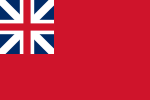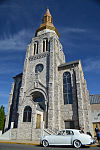Sayre and Fisher Reading Room

The Sayre and Fisher Reading Room, in Sayreville, Middlesex County, New Jersey, United States, was constructed in 1883 for recreational use and for showcasing the Sayre and Fisher Brick Company ornamental products. Also known as Sayreville Hall, it was added to the New Jersey Register of Historic Places and National Register of Historic Places in 1979. It served as the town's unofficial library.Sayre and Fisher Brick Company was established in 1850 by James R. Sayre, Jr., and Peter Fisher, and later became one of the USA's leading manufacturers of building brick, fire brick, and enamel brick. In 1876 the area around the village then known as Wood's Landing was renamed Sayreville, after the company's co-founder. It eventually acquired most factories along the Raritan River, and by 1905 operated a two-mile-long complex with 13 separate yards. By 1912, production reached 62 million bricks a year, providing employment for a large part of the local population, some of whom lived in company housing. The complex included a power plant, granary, bakery, slaughterhouse, coal yard, ice plant, general store, machine shop, and blacksmith shop. Among the structures built with bricks from the company are the Empire State Building, Rockefeller Center, the base of the Statue of Liberty, and the Brooklyn Academy of Music. Brick manufacturing declined in the Great Depression, but recovered and stayed profitable into the 1960s. The Sayre and Fisher plant closed in 1970. While most of the industrial buildings were razed, the reading room and some housing buildings remain. The water tower has been restored.
Excerpt from the Wikipedia article Sayre and Fisher Reading Room (License: CC BY-SA 3.0, Authors, Images).Sayre and Fisher Reading Room
Main Street,
Geographical coordinates (GPS) Address Nearby Places Show on map
Geographical coordinates (GPS)
| Latitude | Longitude |
|---|---|
| N 40.471111111111 ° | E -74.355277777778 ° |
Address
Main Street 358
08872
New Jersey, United States
Open on Google Maps






